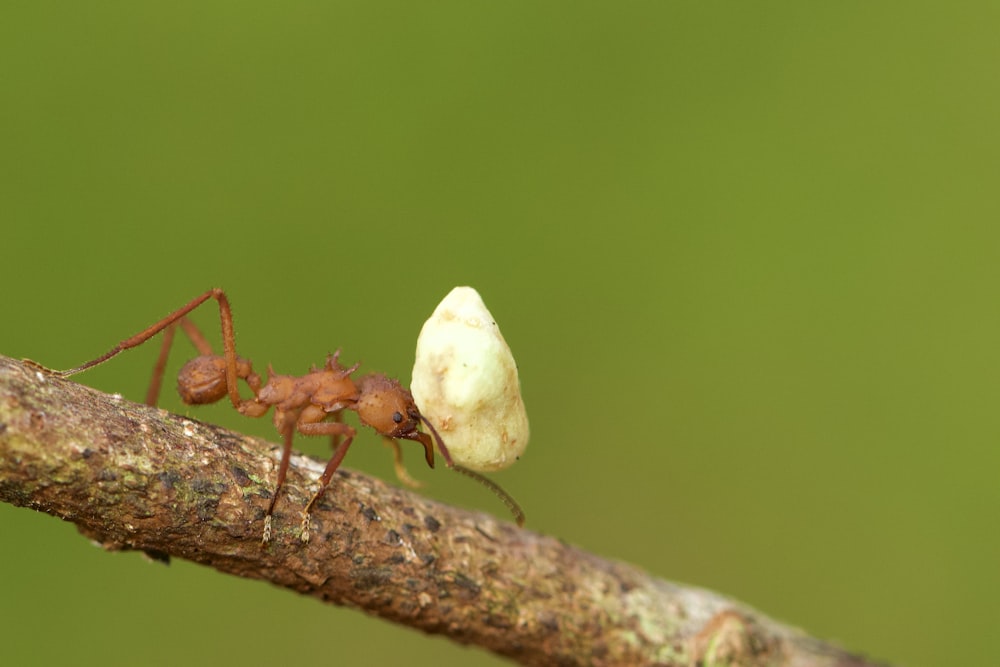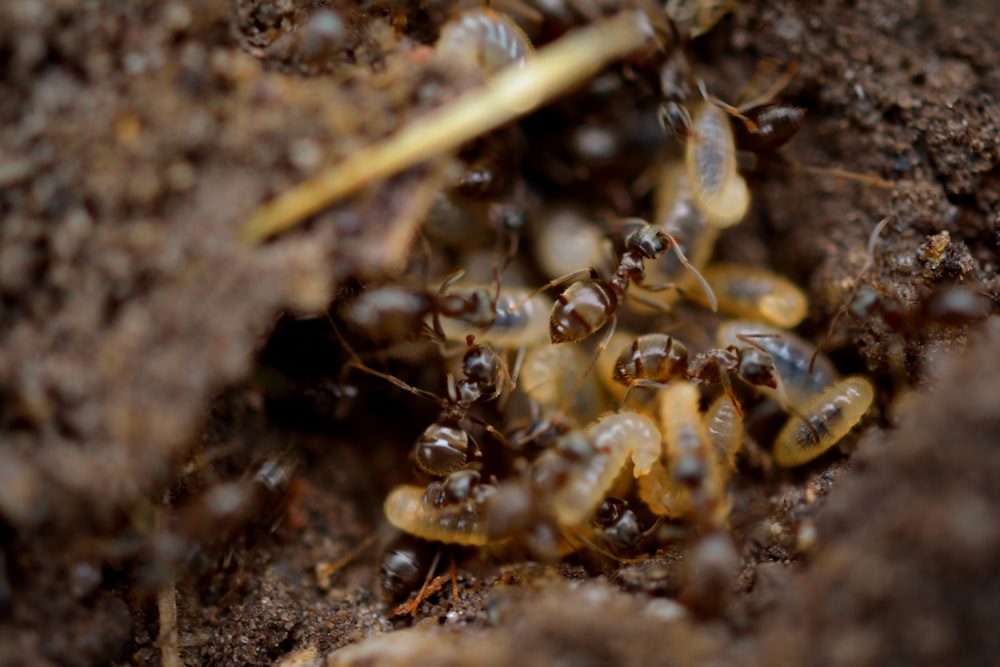Ants are one of the most exciting insects, and their legs are some of their most vital tools. These legs are used to run around and steal food from you and many other cool things.
Similar to the anatomy of other insects, an ant’s legs are attached to the middle section of its body structure.
These legs develop right from the ant’s thorax, but how many?
How Many Legs Do Ants Have
Ants have six legs. Scientifically, ants are classified in the group of arthropods called hexapods, and Hexa means six. The common denominator in all winged and non-winged organisms in this category is the six legs. The legs are in three pairs, three on either side of the ant’s body.
Spider Legs Vs. Ant Legs
The structure of an ant’s legs is easily confused with that of a spider.
However, spiders have eight legs.
Even though ants and spiders are arthropods, spiders are in the arachnids group, and ants are in the hexapods group.
Additionally, ants and other insects have three main body parts, and spiders have two.
The body parts of the former are the head, Thorax (gaster), and abdomen.
The only two body parts of a spider are the head and abdomen.
Ant species with long or overgrown antennae may slightly resemble spiders whose long antennae are sometimes mistaken for an additional pair of legs.
Also, some mimetic spiders are known to mimic the behavior of ants.
This behavior has been observed among the jumping spider genus.
Ants and spiders, while both arthropods are not of the same phylum.
You can see more about arthropod breakdown in this article.
How Do Ant’s Legs Function?
The legs of the ants are attached to their thorax via the leg’s coxa. Specifically, legs attach to the mesosoma. Humans achieve mobility by moving one leg at a time. Ants have six legs; They use these legs to coordinate their movement.
Insect legs are also technically referred to as thoracic legs because they are attached to the Thorax.
The legs are in three pairs; the fore, middle and hind, and the Thorax.
The Thorax has three parts, pro, meso, and metathorax.
The fore legs are attached to the prothorax section—the middle legs to the mesothorax and the hind legs to the metathorax.
Locomotion is achieved when the ant moves the front and back legs on one side simultaneously with the middle portion on the opposite side of its body. (See More)
When this action is repeated repeatedly, expert etymologists will refer to this as the alternating tripod gait.
What is the Function of Ant Legs?
Ants use their legs to achieve similar outcomes to humans. These include walking, hunting, running to escape predators or enemy attacks, swimming, or floating in the water or other liquids. They also use legs for additional functions like climbing surfaces or digging/burrowing.
Some of the functions of ant legs include;
- Ant uses their mandibles (two tiny hooked claws) and legs during burrowing activities and running.
- Ants that make nuptial flights, such as the queen and males, use their legs to land.
- Some ants use legs for altering potential predators, such as producing rattling sounds to ward off enemies. This behavior is typically seen in bullet ants that rub their legs against their body parts to warn perceived enemies to keep off or they will be stung.
- Among Trap-Jaw Ants, the combined jumping power of their vast and strong mandibles and their legs enables them to escape sand traps set up by ant lions.
What Are The Parts of an Ant’s Leg?
The parts on an ant’s leg are the coxa that joins the leg to the ant’s body. It’s followed by the femur, similar to the thigh bone in humans. Then follows the tibia that supports the entire weight of the ant.
The last two parts are the tarsus and the pretarsus, which act as a foot.
The tarsus and the pretarsus have contact with different surfaces the ant walks on.
These parts have tiny hooked claws that enable the ant to attach to surfaces and hang upside down.
The claws are so strong that this effect works on walls, even when the ants carry loads several times their body weight. (Read More)
How Many Legs Do 5 Ants Have?
Since all ants have six legs, five ants have a total of thirty legs, and it is simple arithmetic. Irrespective of differences in length, size, and anatomy of the legs, the count remains the same even if the ants are from different species.
Large ant species, however, will have longer legs than smaller species.
The legs of most species are modified to match and support the natural behavior of the ant.
For instance, cursorial legs are natural to running ants so they can walk faster.
Essentially, not all ant legs do not do the same job.
How an ant uses its legs depends on its species and the type of ant it is.
The legs of a worker, male or queen ant, are functionally fit for their duties in the colonies.
How Many Legs Do Carpenter Ants Have?
Carpenter ants have six legs, as do many other insects and ants. Notably, though, carpenter ants are in the category of giant ants. They measure 8-25mm body length, and their legs are longer, larger, and stronger than those of much smaller ants.
Carpenter ants are notorious for attacking dead wood in houses.
The strength of their legs supports the ant when chewing timber with their well-developed mandibles.
Workers forage individually, and their legs can carry heavy food particles from the source back to the nests alone.
How Many Legs Do Red Ants Have?
Red ants have a similar number of legs, six in three pairs. However, the anatomy of their legs is adapted to their biology and ecological environment. Their legs enable workers to forage for plants and insects and make nests in the soil.
Red ants live in open areas or dig mounds where natural cover is absent.
These creatures nest in soil preferably close to wet conditions.
They are commonly seen near waterways such as rivers, dams, water lawns, or ponds. In these habitats, they nest under logs, timber, or stones.
In open areas such as parks and lawns, they construct mounds.
The legs of fire ants are powerful and have fossorial and natatorial capabilities.
The former is beneficial in burrowing mounds, and the latter helps survive floods.
Red ants have been spotted forming survival rafts on the water. Thousands of them join their legs together to float on water until they land in a place where they can inhabit and invade.
How Many Legs Do 15 Ants Have?
The simple, straightforward answer is that fifteen ants have 90 legs. It does not matter what species or size of the ants; the outcome is the same.
However, there are over 15,000 species of ants worldwide, some small, others large.
Their body characteristics and behavior differ; some live on trees, others on the ground.
The food preferences also vary, with some craving proteins and others seeking carbs and sugars.
Some ants live in the tropics, while others are adapted to the arid areas.
Based on these differences, even though a sample of 15 ants will have 90 legs total, significant variations arise when considering how the legs of each ant species have adapted biologically to these conditions.
How Many Legs Do Queen Ants Have?
A queen ant is still an insect and has six legs like other insects and ants. Usually, a queen ant is much bigger than her worker ants. Due to her overall bigger size, she will also have longer legs than the other ants.
Again the size of the queen’s legs is different among different ant species.
The queen’s biology is optimized to enable her lay eggs.
Nonetheless, her legs follow the anatomy of regular ant legs and structure.
An ant queen has a more elaborate thorax because it harbors the wings, and her springy legs are helpful during the nuptial flight.
Her long legs also enable her to reach her gaster to collect the eggs she lays and arranges them for hatching.
Some Additional Ant Articles You’d Enjoy Answering Common Questions
Ants are incredible insects.
With this fantastic insect, we enjoy plunging deep into every aspect of them.
We have some complementary articles that answer some of the questions listed here:
- What Are The Animals Eat Ants: Humans aren’t the only predators of ants. Since we know ants use their legs to run from predators, you may be interested in knowing which ones.
- How Long Do Ants Sleep: Even with six legs, an ant still needs sleep. Or do they? Find out more here.
- Can An Ant Freeze To Death: Six legs won’t help out much in the freezer. Are ants in your freezer a problem or a solution?
- The Bug That Looks Like An Ant: Now that you know how many legs an ant has, use this guide to figure out if those insects you’ve been seeing are actually ants.
How Many Legs Do Black Ants Have?
Black ants, like all other ants and insects, have three pairs of legs, in total, six. Black ants are tiny creatures, with the worker measuring about 3-5mm body length and males 3.5-4.5mm. The small size implies that they have six little legs.
The typical habitat for these ants is either wooded or open areas.
Due to their small body size, they make nests under stones, rocks, or rotting wood.
In homes, they exploit wall voids.
So, their legs are the scansorial type adapted for climbing.
The black ant queen is nearly double the worker ant size (6-9mm).
The black ants’ queen has legs more prolonged than the workers or males.
These are formicinae subfamily ants that emit formic acid when they sting.
How Many Legs Do Worker Ants Have?
All worker ants across the over 15,000 species have six legs. Again the structural form of the ant legs in all ants is the same. Modifications are observed depending on ant species where workers’ legs will form to adapt to the biological behavior of their environment.
Workers ants that climb have scansorial legs for climbing, as in bullet ants.
Ants that run fast have cursorial legs for fast take-off, e.g., running ants.
Natatorial legs are seen in ants that live in wet habitats like the fire ants.
Ants that burrow the ground to create nests, such as giant Amazonian ants or dinopera quadriceps, have fossorial legs suited for digging.








